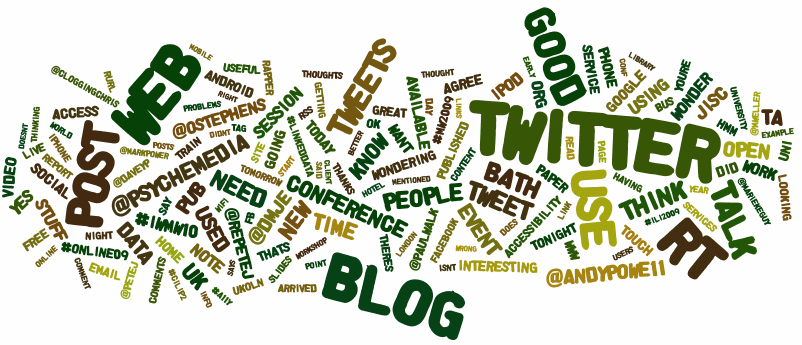Twitter Webinar with Tom Whitford and Victoria Olsen
In Will Deyamport, lll's blog Peoplegogy, he has a Twitter Webinar with Tom Whitford and Victoria Olson. In this session, he discusses how Twitter works and the advantages to using Twitter in the classroom. This webinar is created using Google + Hangouts On Air.
Dr. Deyamport is the instructional technologist for Hattiesburg, Mississippi public schools. Victoria Olson and Tom Whitford assisted Dr. Deyamport during his Twitter webinar. Mr. Whitford started using Twitter for educational purposes a year ago. He heard other educators discussing it at a technological conference he was attending. After the conference he started following educators on Twitter and continues to find new uses for this social medium. Ms. Olson began tweeting with her colleagues. She then created a separate Twitter account to tweet with parents of her students. She soon discovered that not only her parents were on Twitter, but many other educators use Twitter as well. Dr. Deyamport has used Twitter going on four years and has discovered that Twitter is a great networking tool. He follows many other educators and receives many new educational ideas.

Dr. Deyamport ask his webinar guests a series of questions.
What is a Personal Learning Network (PLN)? It is a network that you personalize to meet your criteria. You can continue to add resources expanding on different topics that relates to education. Twitter allows you to follow people from all around the world, adding to your learning experience.
How do you determine who to follow? Ms. Olson was following a couple of educators and saw that one of them had hashtagged ED Chat. She clicked on ED Chat and a huge stream of names appeared on her computer screen. She started to follow the educators that shares her teaching concepts and and now follows hundreds of educators. She follows people who challenge her thinking and give good ideas. She suggests to make sure that the person you're following has more than just one good Tweet. If you don't follow this suggestion your feed will be filled with unwanted information.
What is a hashtag? Hashtags are labels given to Tweets. There are many different hashtags you can create for education. They also allow groups of educators who are interested in the same subjects to chat at scheduled times of the day. Educators can then share their knowledge on personal and educational levels.
How does an administrator share Twitter with the teachers at their school? How can you promote Tweeting and get them involved? Mr. Whitford began by giving his teachers an assignment to use Twitter, encouraging them to log in to a Twitter account. Almost all of his teachers signed up for Twitter, some of them even participating in chats. The teachers had numerous questions about how to use Twitter, so he scheduled staff meetings and computer lab time to answer these questions. Teachers were shown the tools available on Twitter, getting more teachers involved in the process.
How can a teacher encourage other teachers to get on Twitter? Twitter can be challenging for people who are not used to technology or social networks. If this is the case, Ms. Olson usually starts them on a simpler social network. She finds Pinterest the easiest to start people on because it is very visual and user friendly. Sometimes it takes awhile for a teacher to become accustomed to Twitter. Building relationships with other educators is the most time consuming process.
How can you get the most out of Twitter? Twitter is about building relationships and having actual conversations with others in order for them to trust the information you provide. Twitter is an ongoing learning process that you learn at your own pace.
My name is Haley Torries and I am a Student in EDM310 at the University of South Alabama. I did not know how much Twitter could be used in the educational field. After Watching this video, I now understand that Twitter is a great resource for teachers to use for a PLN. Thank you for helping me have a better understanding of Twitter.
Peoplegogy TV: Your One Sentence
Peoplegogy TV is a show dedicated to help educators become their best self, created by Dr. Deyamport. The first episode, Peoplegogy TV: Your One Sentence, is about educators finding the one sentence that states what they are seeking through education. Businesses usually have a sentence or what is known as a mission statement stating what they stand for, while educators usually do not have a mission statement. In this episode, Dr. Deyamport was joined by Jerry Blumentgarten and Jaime Vandergrift.
Ms. Vandergrift wrote a blog post about "Your One Sentence", the inspiration for this first episode. She explains her efforts in figuring out what she really wanted her true self to be. In her blog post, she shares her journey and how she discovered, through her experiences, that it is not about the apps or iPads, but about changing mindsets towards digital tools. Ms. Vandergrift’s sentence is about changing the leadership roles of educators and finding something in them to build their confidence on changing education. As you have experiences, your sentence will change adapting to the person you are becoming. Technology is an ever changing process that allows for continual learning.
Dr. Will Deyamport, III,
I am a student in EDM310 at the University of South Alabama. I enjoyed watching the first episode of Peoplegogy TV. I have never thought about finding a sentence that defines me before watching this episode. I am excited to start the search for my sentence and what I am suppose to do with my life. I can't wait to see what the next episode will cover.
We did This is My sentence (twice) early in the semester. You don't remember doing that?
ReplyDeletevery well done.